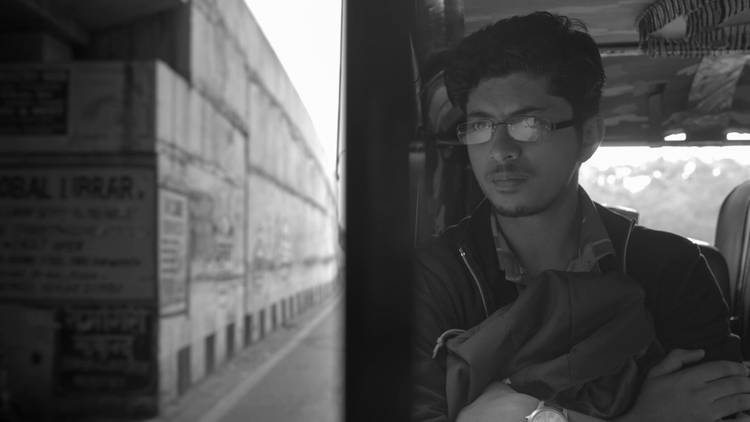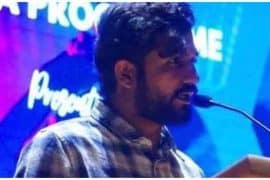Here is the review of an emotional roller coaster about IIT JEE aspirants by a regular Humanities student from Delhi University (DU).
Art is the imitation of real life, but rarely do we see reality and practicality displayed to its core. Our Ranbir Kapoor-like heroes are always running after their artistic ambitions, escaping the brutality of a 9-5 job. The students we meet are either geniuses like Rancho, stuck in the wrong space like Farhan (3 Idiots) or pining for love like Krish (2 States).
Seldom do we meet a Vaibhav or a Meena or even an Uday. These are the close specimens to real life students, gripped with encompassing student pressure in the harsh world of ‘Kota Factory’.
I would call Kota Factory, The Viral Fever’s (TVF) ‘s best creation after Pitchers. It is subtle yet unnerving. It resonates with everyone regardless of their background or professional choices. Maybe, because Kota Factory tells a story which we have either suffered or escaped. Our society has been conditioned in a way, that kids are set to become Engineers or Doctors, if not then Lawyers or Civil Servants, and for all of us who end up choosing Arts, we become the escapees who gave up on hard work and ‘Maths’.
We have all seen at least one person holed up in their homes all day, learning the Periodic Table by heart, passionate to get into IIT. For some, it is our siblings, for others, its might be our schoolmates. The struggle these kids go through is familiar to us all.
So, calling Kota Factory a show constricted to one set of audience, who have undergone these struggles is unfair to its makers. Yes, it might make that set of people relatively more emotional but it works for everyone. In the end Kota Factory is an example of a well-made show.
It has a brilliant cast, poignant cinematography, responsible direction and above all a heart-stealing script. Even the smallest of moments and characters leave impact.
It opens with a coloured montage of an advertisement about Maheshwari Classes, the top-ranking Coaching Institute in Kota for IIT-JEE aspirants. This is the type of advertising we are all familiar with, the one that has a voiceover by the overachiever of their passing batch to employ and attract more students for their next year’s batch in the capitalist economy. Things become interesting when in the first 40 seconds the colour fades away leaving the dark and gloomy black and white format which evokes a sense of emptiness in Vaibhav’s life at Kota in the next 5 episodes till he comes back to Maheshwari.
After getting rejected at Maheshwari, Vaibhav moves to Prodigy Classes. The journey between Maheshwari and Prodigy is highlighted with a monologue by the auto driver mourning the loss of an earlier city which has now just turned into a factory with huge ambitious coaching centres, student mess at every corner and PG’s and hostels on every street. He says “Big Boss dekhte ho?” when Vaibhav replies with an affirmative, he laughingly responds with a “Yahan koi nahin dekhta”.
This is the form of subtle commentary writers at TVF are masters in. This dialogue highlights the lack of childhood luxuries, students at Kota partake in, due to immense pressure of completing their syllabus, practice questions, DPPs and sheets at least thrice.
Prodigy Classes accepts Vaibhav, with full fees for the first and second year. With the manager of Prodigy Classes, Deepak, Kota Factory introduces its viewers to education as a money minting institute for many in Kota. At the same time, we meet the lovable all-time favourite TVF constant and the very dependable ‘Jeetu’, or as he is here called the student’s beloved ‘Jeetu Bhaiya’. He is an addition to the list of cool and life changing teachers of the industry standing along the likes of Aamir Khan in Taare Zameen Par. The first lesson he teaches to his new students is to come find him if there is any problem, be it personal or professional. From there, the five-episode series deals with education, friendship and romance. The time run of each episode gets lesser, but the content remains strong and keeps one hooked.
Another heartfelt character is Meena. He might be the most simplistic economically backward class representation I have seen in a long time.
Unlike Gully Boy’s Murad, he doesn’t have a humongous “aukaat se upar ka sapna” He is a true IIT aspirant at heart, who will study through an earthquake and whose economic backwardness takes a setback against his genius. His emotional sincerity and sensitivity bring out friendship in a new light because like a true Kota studyholic “Dosti revision thodi hi hai, jo karni hi hai.”
There are innumerable metaphorical shots in the show, the most prominent one being the overhead shots in the first episode. Throughout the episode we see Vaibhav fighting against all odds to get to a better batch than A10, he is running against time and his fellow students so we see him wearing a grey hoodie running opposite to the uniform wearing systemised students twice in the episode. While, in the end of the episode, once he gets to batch A5, he is also wearing that dark uniform, walking along the kids, moving in the same direction, and a part of the rat and mouse chase. Here, the camera moves upwards over the cage-like structure of the building, locking the kids in the claustrophobic and inescapable space of Kota and its stress. This form of shooting continues throughout the show where the students always seem constricted in their space, stuck without an escape.
The show nails the female scarcity in the competition of becoming an IITian. Meenal, a student from the batch A5 is the ‘girls’ topper at Prodigy which implies that there are absolutely zero female species in the first four batches of the institute. Uday’s girlfriend Shivangi is a medical aspirant because her father is an engineer, despite the fact that she hates Biology she is studying to crack NEET. Another notable plot device used by the writers is Meenal’s exit.
Last, she reveals that she is actually prepping for Columbia, Yale and NYU to the unassuming-most- probably-already-deciding-their-baby-names Meena, whose heart breaks at this revelation. He couldn’t digest that his two loves: IIT and Meenal are not in the same direction. Post this, Meenal vanishes, which implies that she is no longer in the race to IIT. She is an outsider and her presence isn’t threatening anymore.
Every episode brings an emotional turmoil to its surface. The mother’s minimal presence in the second episode almost drove me to tears. Jeetu’s monologue from the first and Uday’s rant from the last episode respectively are equally powerful. Meena and Meenal’s innocence and Vaibhav and Vartika’s naïve study dates are delightful.
If the show had one drawback, that has to be the constant product placement of the show’s sponsors in every episode. It’s ironical as the show itself mocks the advertising and capitalism of the JEE coaching sector.
Kota Factory comes with a cautionary warning for those who are prepping for IIT-JEE currently because despite its comedic tonality, it highlights the pressure and competition over and over again.
As Jeetu Bhaiya reinforces, IIT is not a destination for the aspirants, it becomes their life goal, their only solace and only dream. For two years these kids constantly work themselves to the ground to achieve that dream, and when they are unable to reach there, it turns into a life-long trauma of a broken heart which takes years to heal.
Image Credits: IMDB
Sakshi Arora
[email protected]





Comments are closed.